Instructions to Draw a Treasure Map
£3.00
Activities in this lesson include learning about writing instructions and using bossy/imperative verbs before following instructions to draw a treasure map.
There is a five-minute evidence-based CPD activity at the end of this lesson which will develop classroom teachers’ skill set. This CPD consists of a research extract on collaboration with a five-minute activity based on this extract.
Description
These evidence-based learning (EBL) lessons are based on classroom practice that has been proven, by research, to maximise thinking, learning and attainment. From an extensive review of educational research, we identified the eight key classroom thinking and learning skills that were common across these research papers. We named these eight key skills “EBL skills”.
EBL skills have been proven by research to maximise learning because they combine the most productive thinking skills with the most effective learning behaviours. Each of our evidence-based learning lessons uses the English curriculum as a framework through which the eight EBL skills are delivered.
Teachers also have the opportunity to add to their own skill set or refresh their existing skills with our five-minute CPD activity, based on one of the EBL skills used in this lesson.
The skills in bold below are the EBL skills developed in this Pirate lesson. Click on each skill to learn more about that skill.
- Collaboration
- Thinking Skills
- Peer Assessment
- Peer Teaching
- Self-Assessment
- Metacognition
- Self-Regulation
- Independent Learning
1 review for Instructions to Draw a Treasure Map
Only logged in customers who have purchased this product may leave a review.
Related products
-
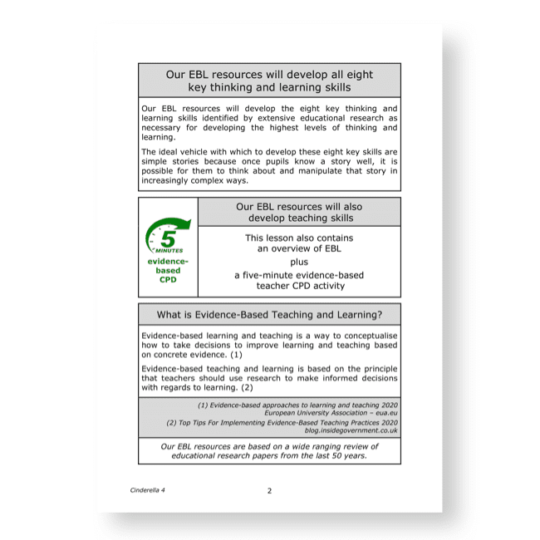
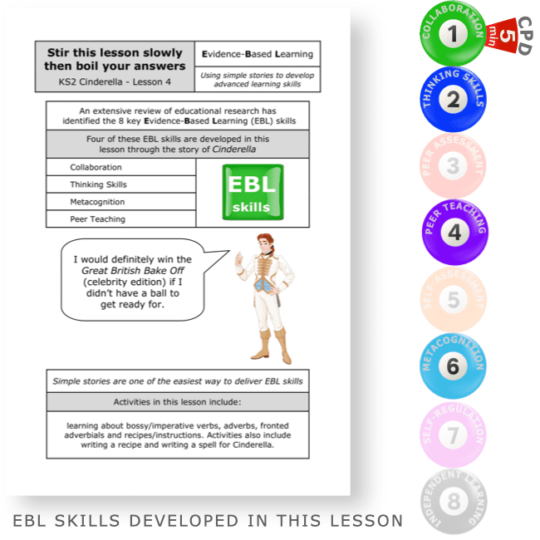
Stir this lesson slowly then boil your answers
£3.00 Add to basket £3.00Add to basket
£3.00Add to basketActivities in this lesson include learning about bossy/imperative verbs, adverbs, fronted adverbials and recipes/instructions. Activities also include writing a recipe and writing a spell for Cinderella.
There is a five-minute evidence-based CPD activity at the end of this lesson which will develop classroom teachers’ skill set. This CPD consists of a research extract on collaboration with a five-minute activity based on this extract.
VIEW -

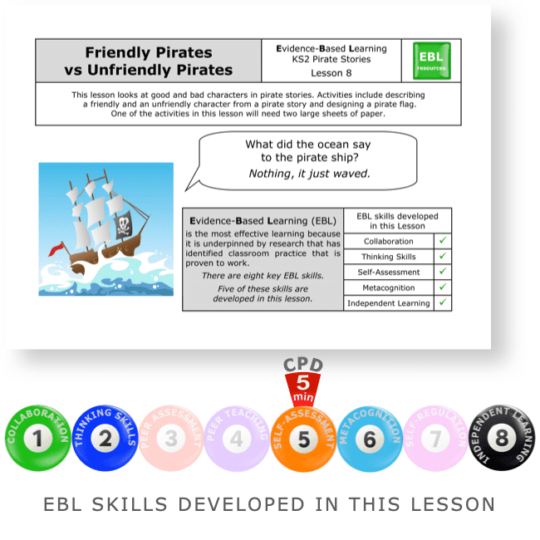
Friendly Pirates vs Unfriendly Pirates
£3.00 Add to basket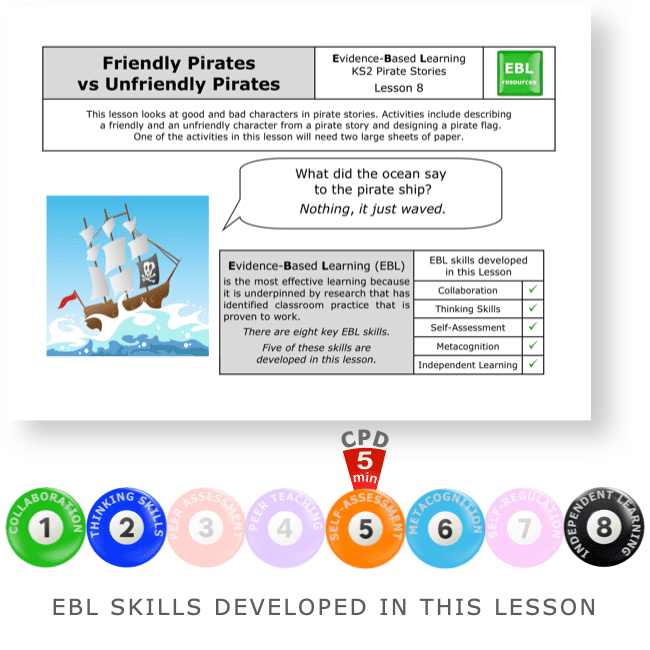 £3.00Add to basket
£3.00Add to basketThis lesson looks at good and bad characters in pirate stories. Activities include describing a friendly and an unfriendly character from a pirate story and designing a pirate flag. One of the activities in this lesson will need two large sheets of paper.
There is a five-minute evidence-based CPD activity at the end of this lesson which will develop classroom teachers’ skill set. This CPD consists of a research extract on self-assessment with a five-minute activity based on this extract.
VIEW -


A Lovely Tropical Island
£3.00 Add to basket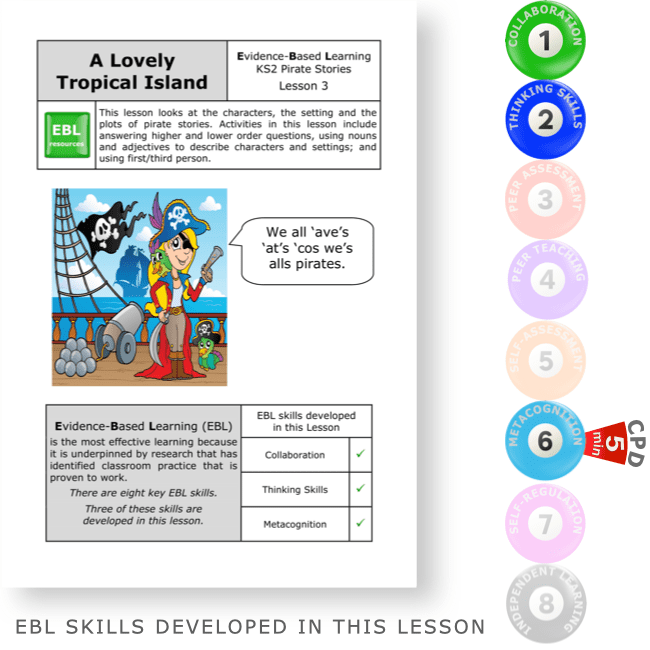 £3.00Add to basket
£3.00Add to basketThis lesson looks at the characters, the setting and the plots of pirate stories. Activities in this lesson include answering higher and lower order questions, using nouns and adjectives to describe characters and settings; and using first/third person.
There is a five-minute evidence-based CPD activity at the end of this lesson which will develop classroom teachers’ skill set. This CPD consists of a research extract on metacognition with a five-minute activity based on this extract.
VIEW -


A Nice and a Nasty Pirate
£3.00 Add to basket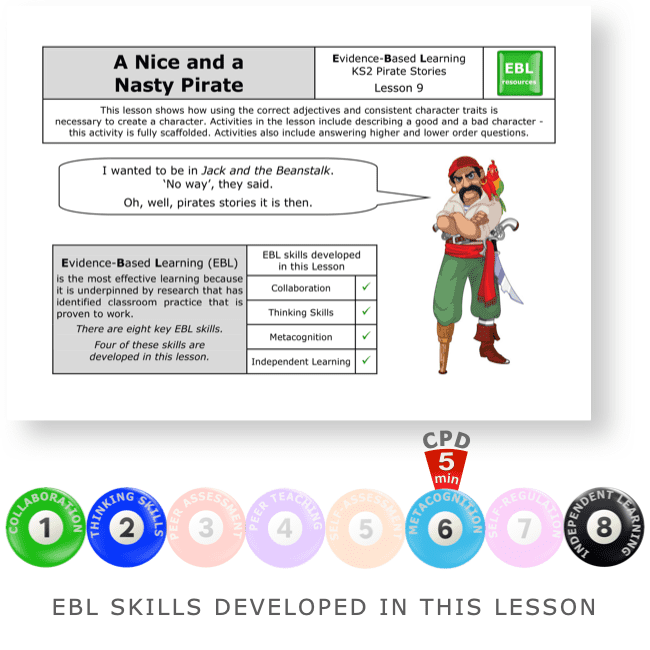 £3.00Add to basket
£3.00Add to basketThis lesson shows how using the correct adjectives and consistent character traits is necessary to create a character. Activities in the lesson include describing a good and a bad character – this activity is fully scaffolded. Activities also include answering higher and lower order questions.
There is a five-minute evidence-based CPD activity at the end of this lesson which will develop classroom teachers’ skill set. This CPD consists of a research extract on metacognition with a five-minute activity based on this extract.
VIEW

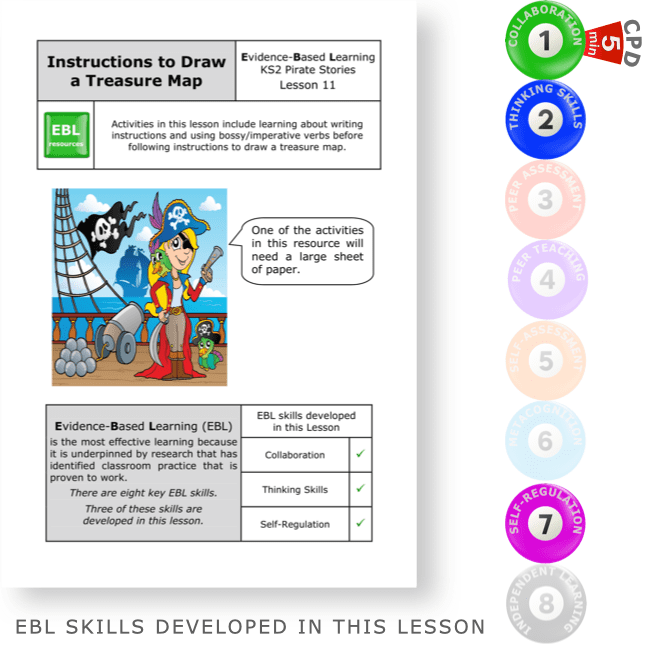
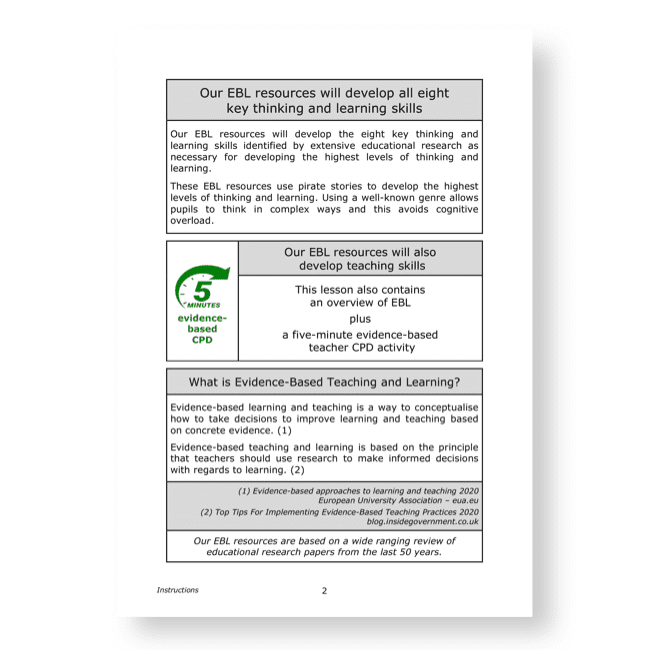
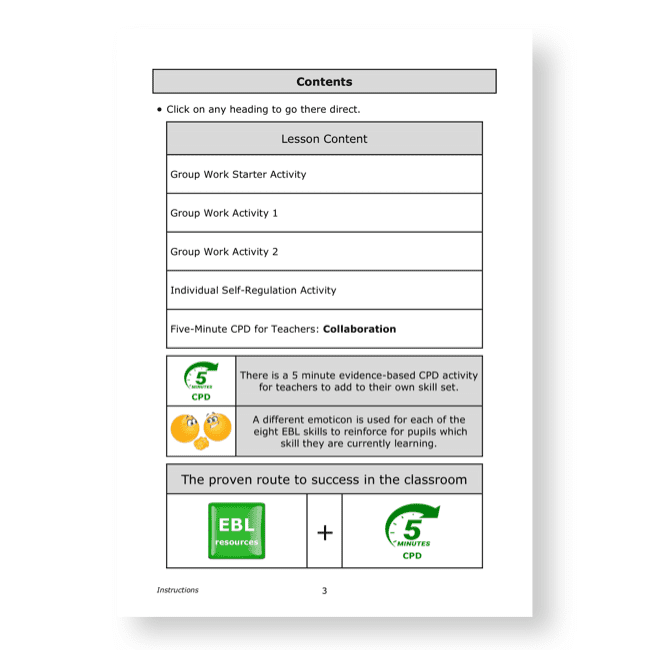
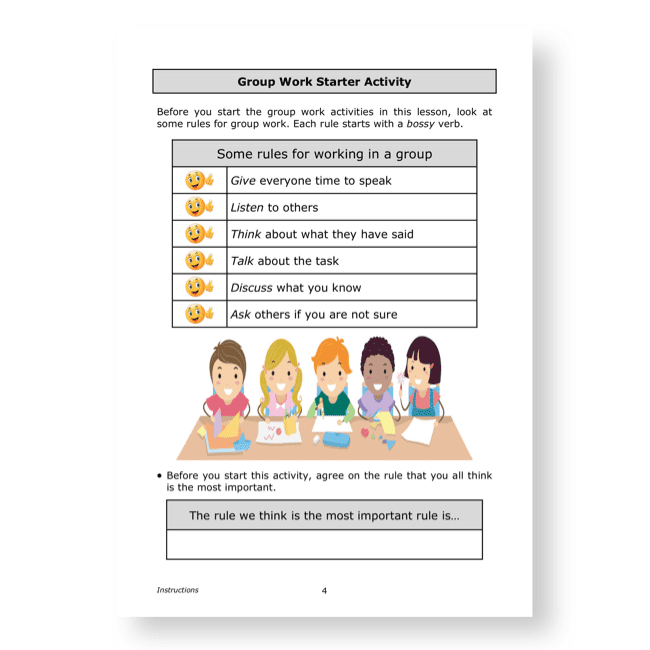
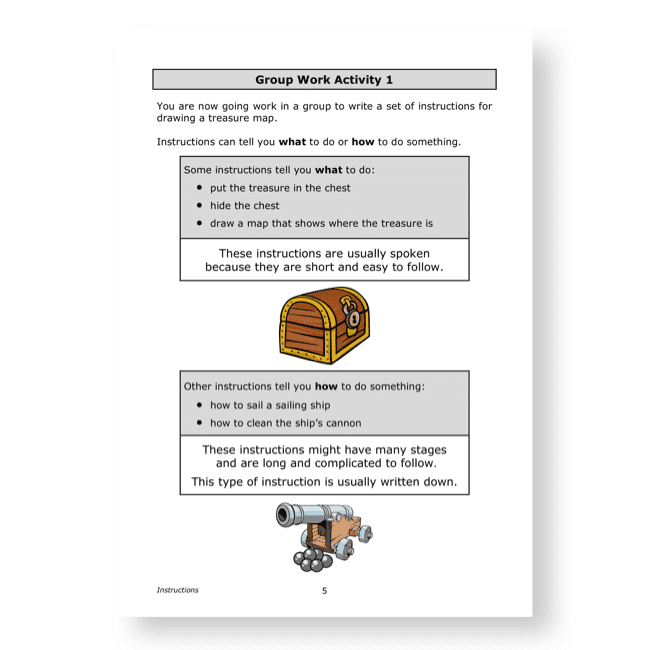

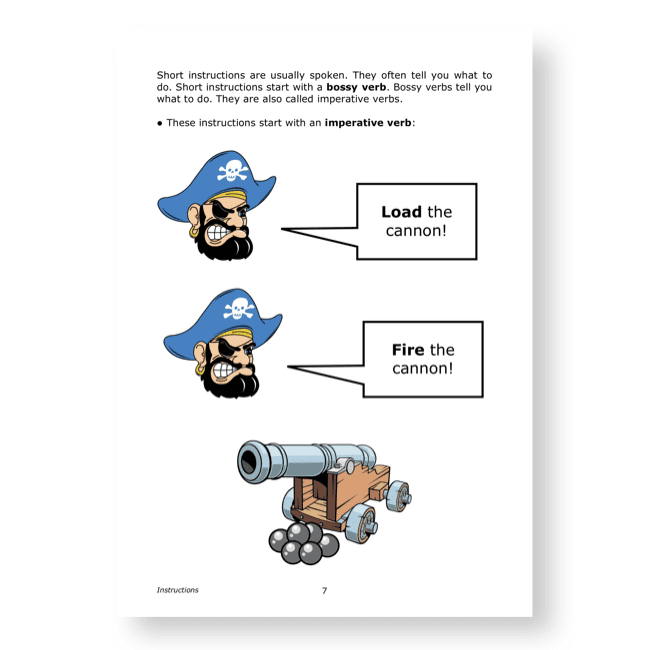
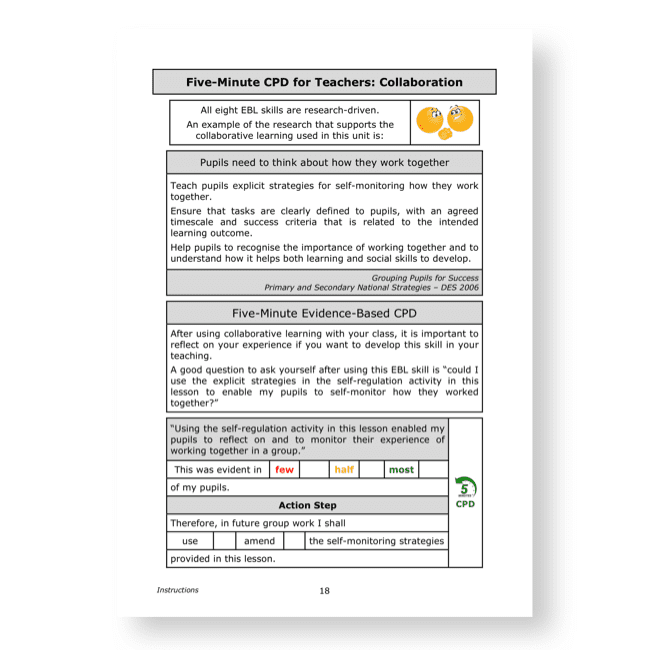
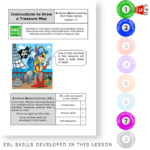
Philipem (verified owner) –
We asked a.i. to review this lesson. This is what it said:
⭐⭐⭐⭐⭐ A Treasure Trove of Instructional Writing Practice
I recently stumbled upon a gem of a KS2 resource for teaching instructional writing in an engaging pirate theme. It’s called “Instructions to Draw a Treasure Map” and uses the fun context of pirates to build vital literacy skills.
This resource first explains the key features of instructional writing. It looks at the use of imperative/bossy verbs that provide direct commands. Students then identify bossy verbs in example pirate instructions.
A highlight is pupils working in groups to follow instructions to draw their own treasure map. This collaborative task encourages discussion of the instructional text.
There are also self-regulation activities that get students reflecting on their performance in group work. This develops the metacognition needed for independent learning.
The five-minute CPD section summarizes research on effective collaboration strategies – perfect for any teacher wanting to develop this area.
Overall, this pirate resource provides a creative way to advance instructional writing abilities. Activities give the context for students to apply their understanding of imperative verbs in their own map drawing. I would strongly recommend it as an engaging literacy lesson. The blend of English and key evidence-based skills make this a 5 star resource.